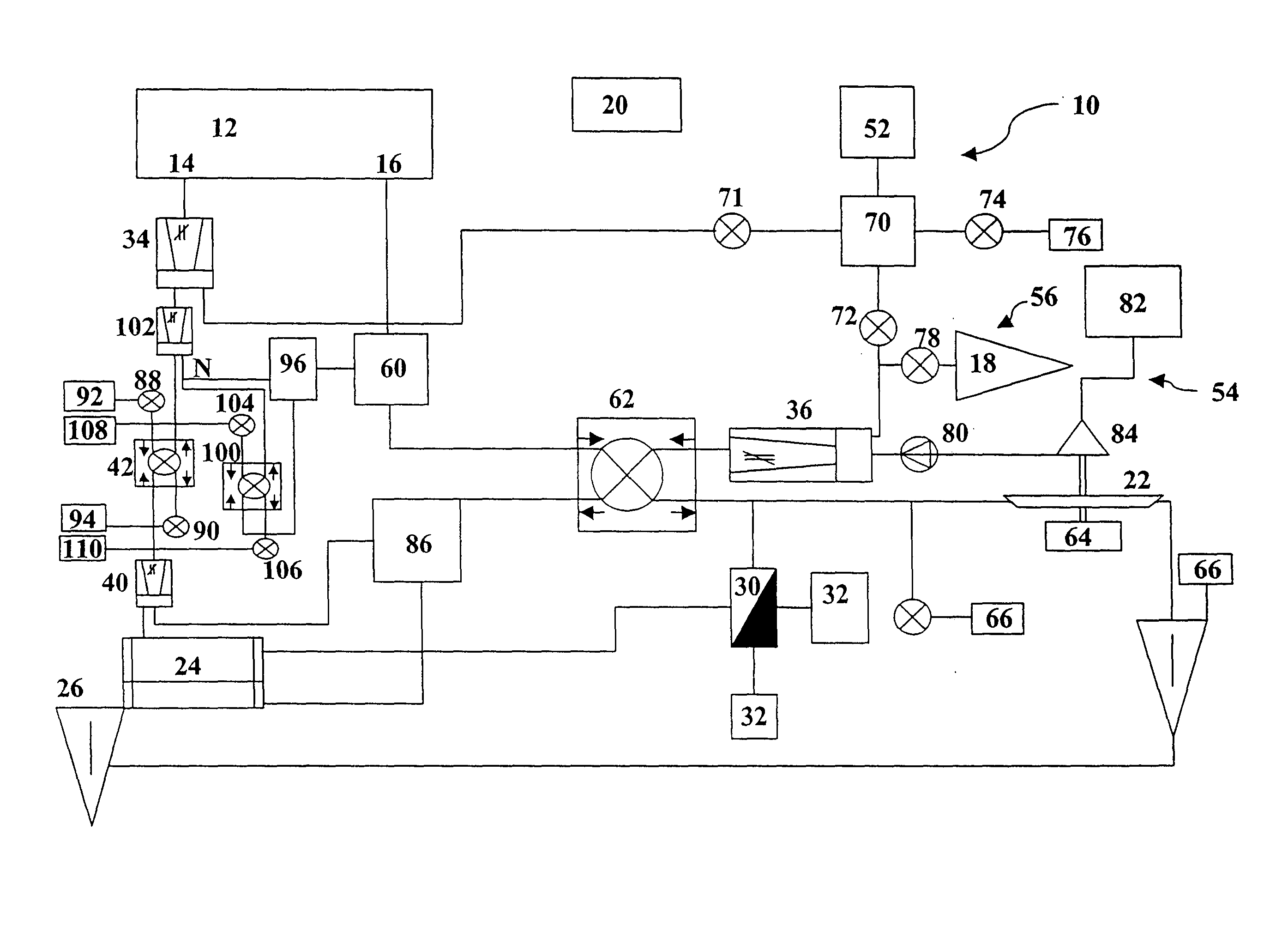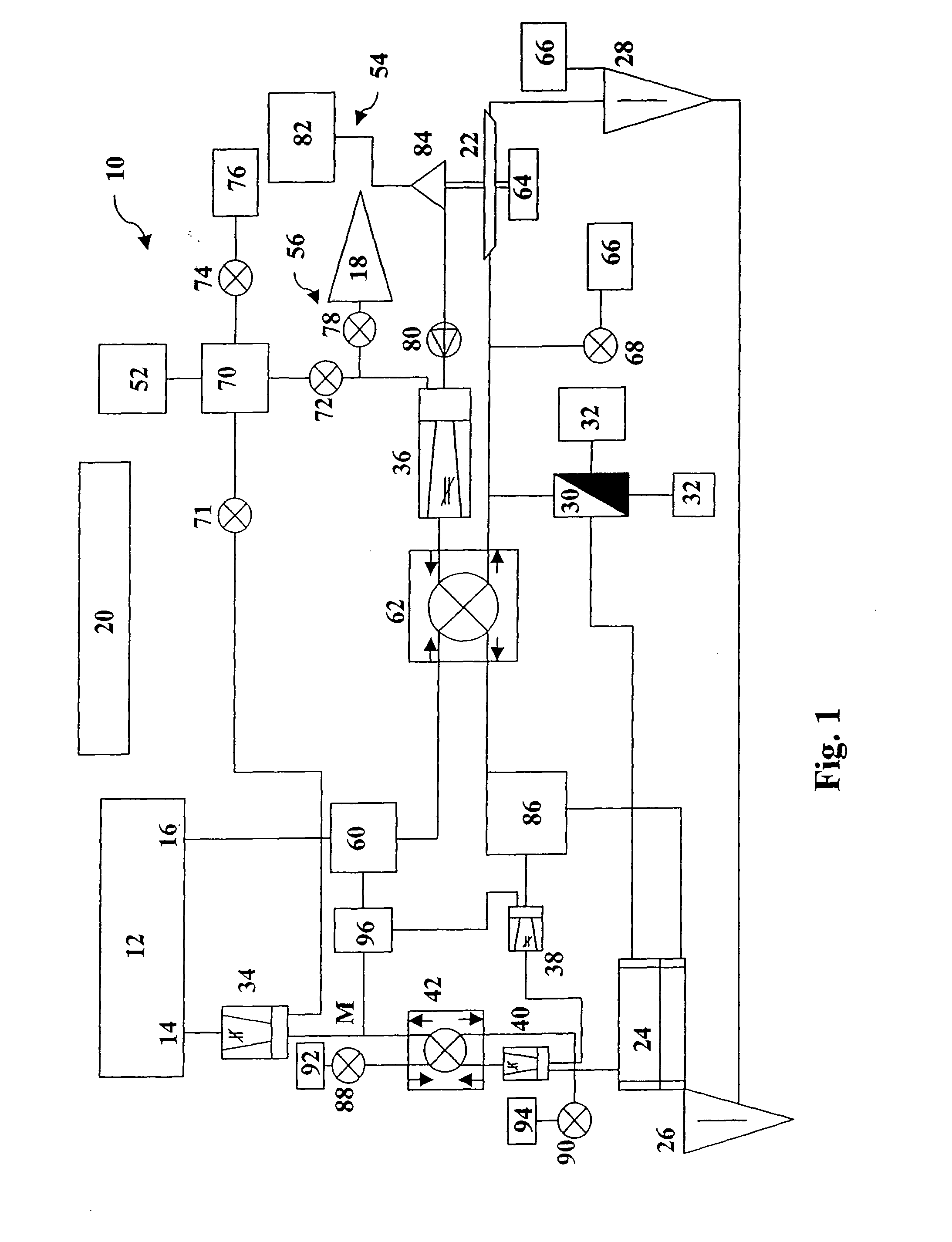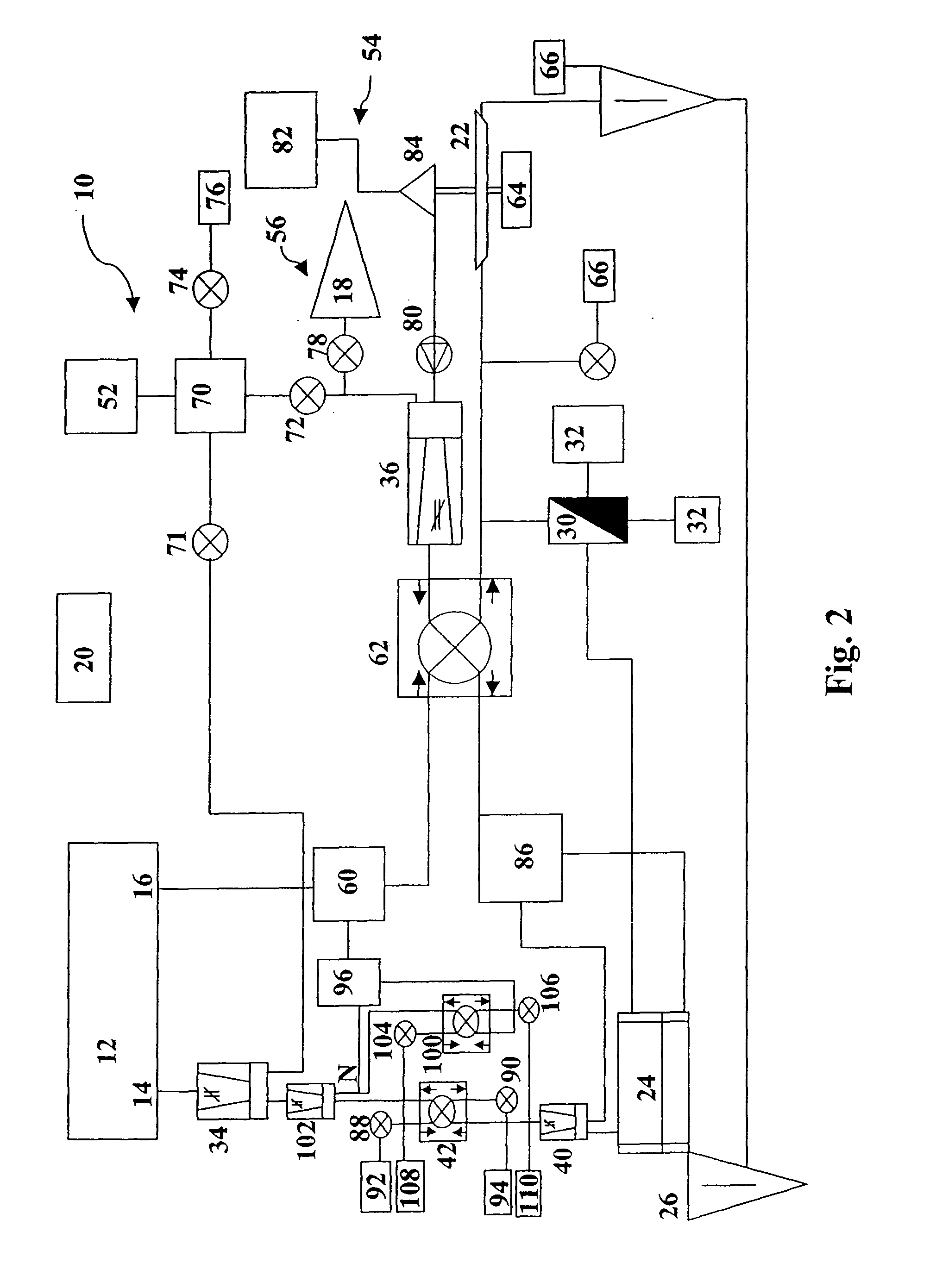Air conditioning system for aircraft cabins
a technology for air conditioning systems and aircraft, which is applied in vehicle heating/cooling devices, transportation and packaging, and energy-saving board measures, etc. it can solve the problems of inevitably occurring energy losses in the process, the bleed air taken from the engine core has a particularly negative effect on the fuel consumption of the aircraft, and the relative high bypass ratio, etc., to achieve a high level of humidity
- Summary
- Abstract
- Description
- Claims
- Application Information
AI Technical Summary
Benefits of technology
Problems solved by technology
Method used
Image
Examples
Embodiment Construction
[0041]In the following figures conducts for air streams are represented by solid lines without the lines having been provided with their own reference numbers in order to maintain the clarity of the figures. Lines for electric current have not been represented, likewise for reasons of clarity. It is directly obvious to the person skilled in the art from the drawings and the associated description where lines for electrical power supply and electrical signals are to be disposed. Moreover, as regards the mixing devices or mixers mentioned in this description, these are adapted to merge a plurality of air streams, in particular those which have different thermal and dynamic states. Of course a mixer can also serve as a branching and distributing device for one or a plurality of air stream(s), depending on the flow conditions. It also should be noted that most of the components described here are provided in an aircraft at least in duplicate to provide redundancy. Also, in an aircraft t...
PUM
 Login to View More
Login to View More Abstract
Description
Claims
Application Information
 Login to View More
Login to View More - Generate Ideas
- Intellectual Property
- Life Sciences
- Materials
- Tech Scout
- Unparalleled Data Quality
- Higher Quality Content
- 60% Fewer Hallucinations
Browse by: Latest US Patents, China's latest patents, Technical Efficacy Thesaurus, Application Domain, Technology Topic, Popular Technical Reports.
© 2025 PatSnap. All rights reserved.Legal|Privacy policy|Modern Slavery Act Transparency Statement|Sitemap|About US| Contact US: help@patsnap.com



